Behind The (Swedish) Glass…RMV Studios and Linn Fijal
Dramatic clouds hover over the Royal Palace, a light wind whips the steam from my strong cup of Swedish coffee, blending with the fresh air that’s shifting from Summer to Fall.
There’s a majestic small town grandeur to Stockholm, an almost fairytale like elegance.
I’m biased, of course, having spent many perfect days here, growing up in this epicenter of culture, nestled in the green and blue archipelago of tens of thousands of islands.
One of these islands is Skeppsholmen, in the center of the city. The bench I chose overlooking the Royal Palace sits a few feet from the Skeppsholmen bridge. The island was once used as a Swedish Naval base, and is still home to more than a handful of old ships as well as the Modern Museum, the East Asian Museum, a newly renovated hotel, the Royal Art Academy, and two striking yet rather nondescript and mysterious looking old brick buildings.
One of these is Mono Music, a record label and mix studio owned by Benny Andersson, one of the “B’s” in ABBA. He also owns the building next door, a newer addition to his 1991 acquisition of the Mono Music building.
This building houses his company’s recording studio, Rixmixningsverket, or RMV.
It sits about 15 feet from the water’s edge, and about 10 feet from the sweeping veranda of the hotel.
Large bay windows encompass the entire building, immediately making me think of slap back and isolation issues, but I hold my tendency to pre-judge, assuming that any studio with a client list including the likes of Celine Dion, The Hives, Peter Jöback, Ulf Lundell, Kate Ryan, Lars Winnerbäck and more would not consist of glass flutter echo chambers.
Linn Fijal, RMV studio manager and house engineer, and her dog Ellis soon come walking around the corner to greet me. Ellis is a bit hesitant in welcoming me but after a few minutes, it becomes pretty clear that I’m not out to hurt anyone. On the other hand, I do want to move in.
The interior of RMV is bathed in a color that to me translates to an immediate ‘calm and creatively-at-home’ feeling.
The lobby feels more like a living room, with a long wooden kitchen table, cozy couches and a fully stocked kitchen, decorated in simple detail, that make you instantly want to grab a guitar off the wall, brew some coffee and write a song.
STUDIO LAYOUT
The studio itself consists of one large control room and a large live room, with three attached iso rooms, each with different diffusion and acoustical treatment.
The ceilings are high and vaulted, with wooden cross beams delivering a rustic yet refined touch.
Both the live room and control room swim in a sea of sunlight, from the bay windows I had noticed from the outside.
It is perfectly quiet. The control room sounds balanced and natural and the live room offers a hint of reverberant color easily manipulated by gobos and the adjoined iso rooms.
Roughly 20’x15′, RMV’s live room has most recently accommodated a 38 person orchestra for the recording of Peter Jöback’s “I Love Musicals,” a compilation of some of musical theater’s greatest hits. Jöback is a famous Swedish singer and pop star, also known for his current role in the Broadway musical, Phantom of the Opera. Celebrities and orchestras are nothing new to RMV, however, considering Benny Andersson has his own ensemble, Benny Andersson’s Orkester, which uses RMV to record their material. The latest musical by Mamma Mia creators Benny Andersson and Björn Ulvaeus, Help Wanted, was also recorded at RMV.
Coming back into the control room, Linn takes a seat by the computer, smiling as she recounts the days before the studio was ready for pop stars and orchestras, before the studio looked, sounded and felt as it does now.
“When construction began in June 2010, it was essentially four collapsing walls and a pounded dirt floor. By November 2010, we were able to get into the control room. That’s when we started putting together the Neve (8068). We flew Fred Hill in, who originally built the board, to help us renovate and clean it up, and at the same time teach us how to take care of and maintain it.
“We sat there, basically around the clock for five straight weeks cleaning every pot and module. The first recording was set for January 10, 2011 with the Benny Andersson Orkester. It was pretty chaotic. Everything had just come in and was completely new. The patch bay for example, hadn’t been labeled, which made things interesting.”
Much of the new gear in the control room was left to Linn’s discretion. Working with Deluxe, a Swedish music and pro-audio company, Linn, Bernard Löhr (studio manager of Mono Music), Benny Andersson and his son and co-owner Ludvig put together gear lists, interfacing with Deluxe and other resellers to find the best blend for RMV.
“The first few months of my job were dedicated to buying gear. We bought a little from each person’s wish list and to this day, continue to fill out, trade and upgrade. The idea is that there should be various pieces of gear, not anything directed towards a certain style or niche.”
Fully stocked with what one would expect from a professional studio, such as 1176s, Distressors, LA-2As, API pres, GML, Waves, Pultec, and more, RMV also has a few unique and difficult to find microphones as well as an impressive instrument collection, including 1959 Steinway Concert Grand along with Mellotron, Rhodes, B3 and Synclavier and other keyboards.
U67s, 87s, 47s (tube and FET), Coles and AKG C24 are typical top shelf microphones in the RMV collection; high end, but well known. Some lesser-known top-shelfers in their locker include two Manibus de Geer tube microphones, a relatively unknown yet highly regarded microphone made by Didrik de Geer (Al Schmitt is another fan of his work). Also in the collection are a couple of Thuresson CM402s, the Swedish made condenser that looks like a bug zapper but sounds unbelievably clear and transparent.
There’s also a nice collection of amps, pedals and guitars, some of which line the hallway to the live room.
“In the end, it’ll never be completely finished,” says Linn. “There are always little details to poke at and make better.” Beyond curating and configuring all the gear, however, Linn also has a studio business to run. Since I wasn’t familiar with what a “studio chef” or head of studio did, particularly when covering both management and engineering, I had to ask…what’s a day in the life like?
“There’s no average day,” she told me. “It’s pretty varied, depending on what project we have in at the time. It can be anything from one musician to 48, in for recording or mixing. Then there’s the booking side of things to take care of and manage; making sure that all the gear is functioning properly, updating the website and all social media, making sure there’s coffee and that the cleaning people show up when they need to; at the same time always looking to be better, to improve.
“I try to keep myself to 40 hours a week, and eat lunch and dinner at somewhat regular hours. It doesn’t always happen that way, of course.”
It sounds a lot like the to-do lists of many pro studios here in the States, save for the fact that Linn is the entire staff. As someone who’s spent my entire professional career inside studios, I scan the rooms, taking in each detail as Linn describes them, appreciating the tremendous amount of work it takes to create, maintain and improve upon a studio such as this.
STOCKHOLM STUDIO CULTURE
Considering her age, Linn not only has an impressive job description and role, she also has an impressive list of credits.
RMV was her first studio job out of audio engineering school, and as she says, laughing, “I thought I knew everything when I left school, but that’s obviously not how it was. Studio work is about a lot more than just a technical skill set.” Although she credits her school with giving her a solid foundation, as many engineers know, trial-by-fire is where you not only learn, but find out whether you can and want to do this kind of work.
Three years later, Linn seems to have little doubt that this is her place, behind the board and in this studio. As the house engineer, she has worked with all the acts and artists recorded at RMV, including Swedish rock bands The Hives, Eldkvarn, and Atlas, singer-songwriter Lars Winnerbäck, Loreen and Kate Ryan as well as film scores for Swedish films such as The Crown Jewels, which won a Nordic Film Composers Award in 2012.
Interestingly enough, her place – both figuratively and literally – is quite uncommon in the rest of Sweden. In fact, most studios in Stockholm don’t have a “studio chef.”
“The studio culture in Stockholm is a bit different depending on where you are and who you’re with. It’s unusual for studios in Stockholm to have an on-staff manager/engineer – I may be the only one. The people I know that work in studios are either freelance or own the studio itself.”
Of those people, Linn is one of few women. Even though Sweden prides itself on equality, as our conversation continues, I begin to see an inside perspective of the male dominated Swedish studio culture that I did not expect. Considering that in 2000, the UN named Sweden and Finland “exemplary countries” in terms of gender equality, and in 2012, The Global Gender Gap named Sweden a world leader in gender equality….that 13 of the 24 Swedish Government Ministers are women, and that women make up 60% of the undergraduates and earn 2/3 of all degrees, you’d expect a progressive environment for women in most all industries. But that hasn’t been Linn’s experience in audio.
“I know two female engineers in Stockholm. And this could be due to many things…,” she ponders. “There exists a certain prejudice that women are bad at engineering, which makes it so that many never even try, they don’t even think to.
“There’s an understanding that girls should be quiet, cute and nice, which creates obstacles.
“I was raised by feminist-minded parents. No one ever told me that I couldn’t do engineering – I was allowed to be loud and play hard rock if I wanted to. No one said it wasn’t ‘girly’ to play bass. My parents have supported me in everything. I like music and I like engineering – so with that in mind, it’s not strange that I ended up where I am.”
But in the real-world of studio work – despite working for a famous “national treasure”-level company – Linn has had to work through more than just the scratchy pots of ordinary studio hurdles.
“I obviously don’t know what it’s like to be a man so any comparison is done through experience and speculation. What I have personally experienced, however, is that I am clearly treated differently. I get the question, ’why do you do this work?’
“When I achieve a goal, it is often explained away with something like, oh they needed to reach a female quota so that’s how she got into school, or that I got the job because I had a relationship with someone important, or I was the only woman who bothered to apply for the job, etc. etc.”
“That I’ve achieved something because I worked hard or am good at my job isn’t considered – there’s always a way to explain it away. It also happens that I’m ignored. I notice that I have to work harder and be better to gain the same acceptance.”
I could say that I’ve experienced some of the same, but even in LA, I worked at a studio that had a female senior engineer, a female manager, other female techs and assistants. Sure, it wasn’t considered “normal” per se but I never felt particularly alone in my position or stripped of an accolade because it must clearly be tied more to my gender than my skill set.
AGENTS OF CHANGE
When I mentioned to Linn that I wanted to write this article, both she and Ludvig were all for it. Her under representation in the industry shocked me, and I don’t mean the music industry in general. Many engineers, techs and managers are the unsung heroes of our industry. However, in a market as small as Sweden, in a studio as high profile as RMV, it seemed very strange that no publication had done a story or interview with Linn, and that when she was mentioned, her role would be marginalized almost to the point of omission.
“It’s impossible to not think about sexism in the music industry – unless you’re really good at closing your eyes. I try to practice zero tolerance for sexism in the studio. That’s Benny’s initiative, and I’m glad he gives me that support. Like I said, I wish it were something that I didn’t have to think about, where you don’t have to have a plan, but it’s unavoidable.”
And perhaps in one respect, it’s better un-avoided – this problem doesn’t seem to be fixing itself.
“To say that it just has to do with women having the guts to take the initiative to go out for this studio work is to deny responsibility,” she says. “If we don’t want to wait 40 years for it to even itself out, we have to be proactive.”
Before I left Sweden, I made sure that I put her in contact with another friend of mine, currently in audio school, and already feeling this disadvantage. I imagine if Linn visited that school, it would do a great deal of good.
As Linn said to me, simply the fact that this article deals with her gender and these issues she’s encountered is enough to prove that we have a long way to go. She’s absolutely right. I don’t particularly like it when people make a big deal of the fact that I’m a woman who opens up compressors for a living. The fact that I was born a woman has nothing to do with my creative or intellectual endeavors, nor does Linn’s gender dictate hers.
And RMV Studios is a phenomenal facility. It is exactly the kind of place I would love to record, work and as I said, even live in — they have a shower after all.
It boldly and proudly represents one of Sweden’s most famous and beloved composers and performers, Benny Andersson, and in its corner of the world works as well to make this issue of “women in audio” a thing of the past.
Linn wasn’t hired because she is a she. She was hired because the company thought she was the best choice. Anyone visiting or working at RMV will be able to see that in little to no time. With her continued success as both an engineer and studio head, pro audio will have little choice but to pay attention to the studio and its staff, shifting the studio culture paradigm while providing inspiration for future engineers everywhere.
Eleanor Goldfield is a Los Angeles-based writer, musician and freelance tech and studio consultant. She is lead singer in the hard rock band, Rooftop Revolutionaries, and works with several studios and pro audio professionals in management and consulting capacities. For more info, check out http://www.eleanor-swede.com.
Please note: When you buy products through links on this page, we may earn an affiliate commission.







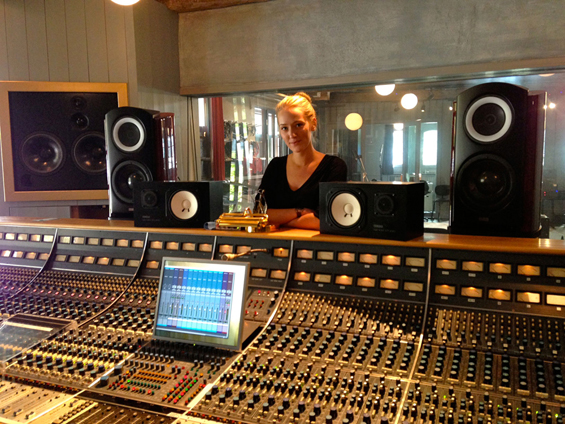
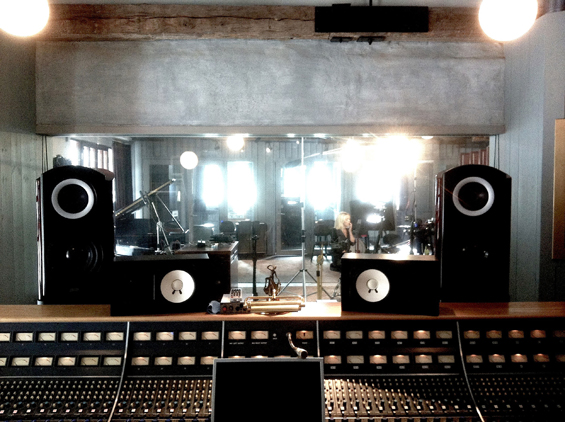
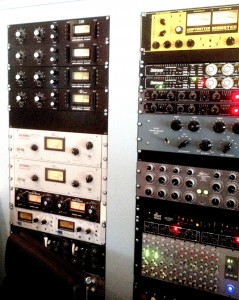
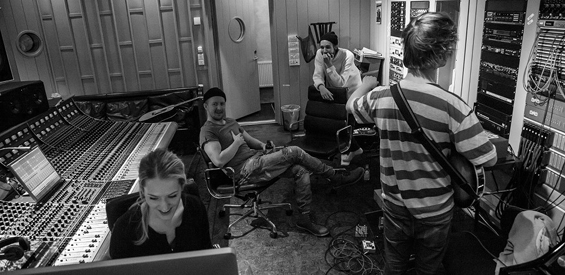
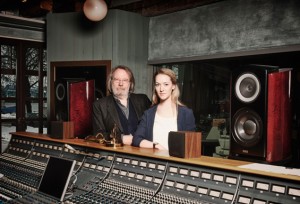
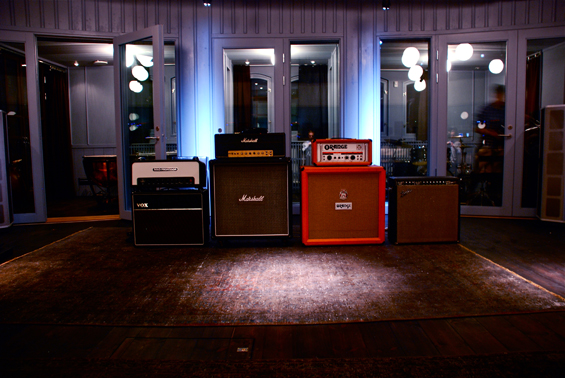
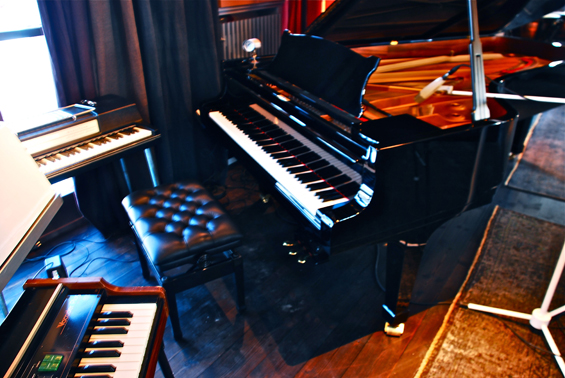
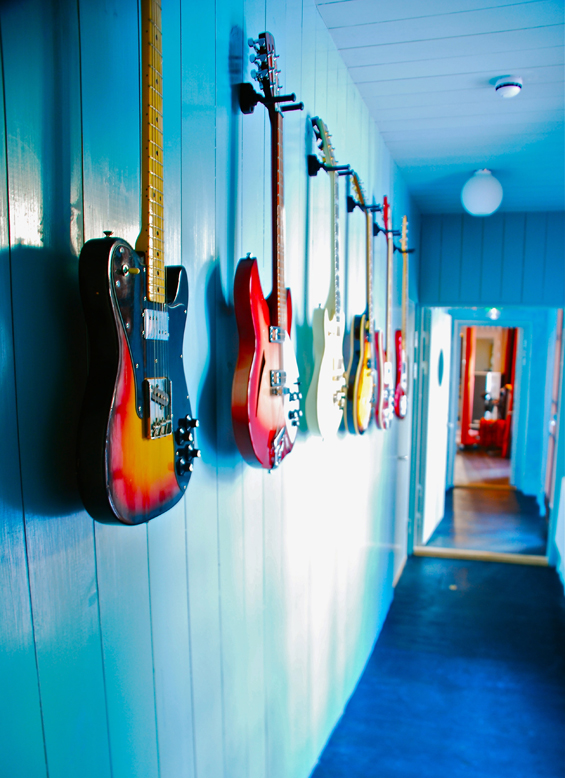
Jens Svensson
October 22, 2013 at 3:32 pm (11 years ago)“I know two female engineers in Stockholm. And this could be due to
many things…,” she ponders. “There exists a certain prejudice that women
are bad at engineering, which makes it so that many never even try, they don’t even think to.”
This does not give a true view! I know of many excellent women engineers in Stockholm and in Sweden generally, live and studio! Also in some cases women are just better suited to it. As for the predjuice? Never heard of it! Most of the people I work with go for the talent not the gender!!
Johanna Wester
October 25, 2013 at 10:15 am (11 years ago)Men who has “never heard of” prejudice against women is something that most of us too often hear of. And the fact that you know of talented women doesn’t contradict any of Linn’s true, brave and clever points.
ookpik
November 8, 2013 at 8:56 pm (11 years ago)Well put, Johanna. Someone who is white could easily over-look a particular, say, institution’s racist hiring practices, simply because they have no opportunity to have it even come up… because they are white. The same goes for this. If a woman is working in sound engineering, the chances are that she has found a studio that has a supportive environment… so she’s likely just focused on her work, as she should be. But the discrepancies in this field with gender are drastic. I’m still not sure why, but it’s true. I was recently in an electroacoustics course on multi-channel composition. The course, prof, and students were all wonderful… but the hard facts are that I was the only woman in a class of 25 students. Lower-level courses had at least 2-3 other women in them, so we were maybe 3/30… but still…. it is a mystery to me why this is true, but it’s certainly a field that is still very behind in this regard. But to be clear, there are many people who are very supportive of women in this field. I know many people, particularly men, who have been very supportive of me for many years and absolutely treat me as an equal. But in general the bias of it being a “male field” is so strong that people simply don’t believe that women can do it, even many women have this mentality. While I wouldn’t go so far as to say that we’re better suited to it, many of us certainly have a lot to bring to it! Great article, by the way. 🙂